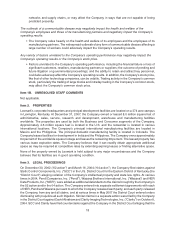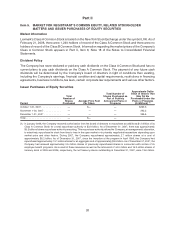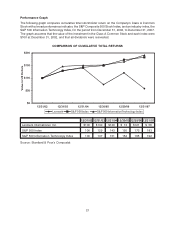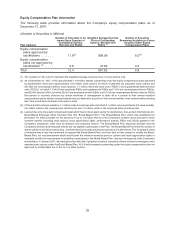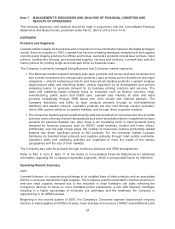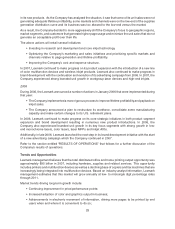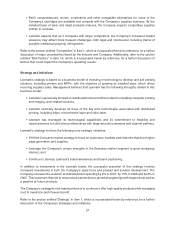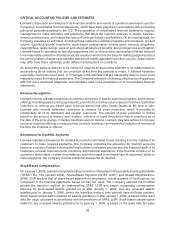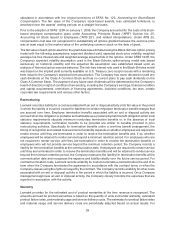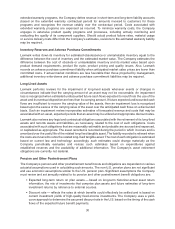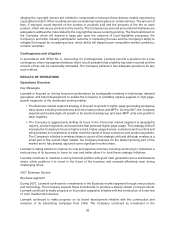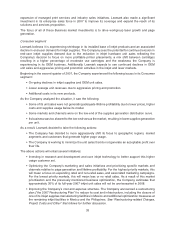Lexmark 2007 Annual Report Download - page 32
Download and view the complete annual report
Please find page 32 of the 2007 Lexmark annual report below. You can navigate through the pages in the report by either clicking on the pages listed below, or by using the keyword search tool below to find specific information within the annual report.• Continued convergence in technology between printers, scanners, copiers and fax machines into
single, integrated AIO devices; and
• Advancements in digital photography driving the opportunity to print digital images on distributed
output devices.
As a result of these market trends, Lexmark has growth opportunities in monochrome laser printers, color
lasers, laser MFPs and inkjet AIOs.
Industry laser printer unit growth in recent years has generally exceeded the growth rate of laser printer
revenue due to unit growth in lower-priced desktop color and monochrome laser printers and unit price
reductions. Additionally, color and multifunction laser printer units represent a more significant component
of laser unit growth. Management believes these trends will continue. This pricing pressure is partially
offset by the tendency of customers in the shared workgroup laser market to add higher profit margin
optional features.
In the inkjet product market, advances in inkjet technology have resulted in products with higher resolution
and improved performance while increased competition has led to lower prices. Also, there is an increasing
trend in inkjet products being designed for business purposes such as SOHO, small business, student and
home offices.
Additionally, over the past couple years, the number of consumers seeking productivity-related features
has driven significant growth in AIO products. Key factors promoting this trend are greater affordability of
AIOs containing productivity features. Management believes the combination of business features made
for the home will continue to drive AIO growth. Growth in inkjet hardware revenue on an industry basis in
recent years has been lower than unit growth due to price reductions.
While profit margins on printers and MFPs have been negatively affected by competitive pricing pressure,
supplies sales are higher margin and recurring. In general, as the hardcopy industry matures and printer
and copier markets converge, management expects competitive pressures to continue.
Lexmark’s dot matrix printers include mature products that require little ongoing investment. The Company
expects that the market for these products will continue to decline, and has implemented a strategy to
continue to offer high-quality products while managing cost to maximize cash flow and profit.
Challenges and Risks
In recent years, Lexmark and its principal competitors, many of which have significantly greater financial,
marketing and/or technological resources than the Company, have regularly lowered prices on printers
and are expected to continue to do so.
Other challenges and risks faced by Lexmark include:
• New product announcements by the Company’s principal competitors can have, and in the past,
have had, a material adverse effect on the Company’s financial results.
• With the convergence of traditional printer and copier markets, major laser competitors now include
traditional copier companies.
• The Company must compete with its larger competitors for retail shelf space allocated to printers
and their associated supplies.
• The Company sees other competitors and the potential for new entrants into the market possibly
having an impact on the Company’s growth and market share.
• Historically, the Company has not experienced significant supplies pricing pressure, but if supplies
pricing was to come under significant pressure, the Company’s financial results could be materially
adversely affected.
26




